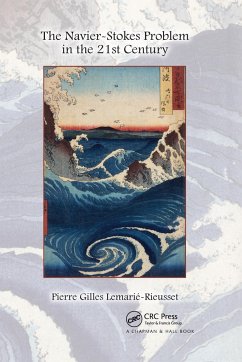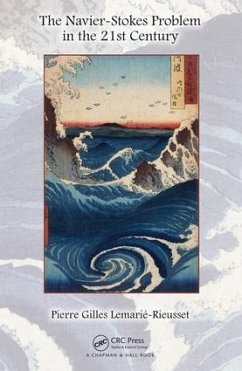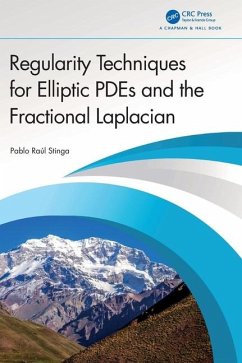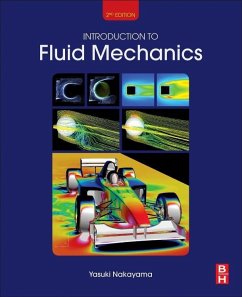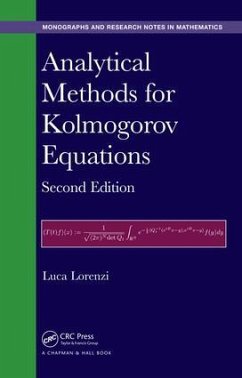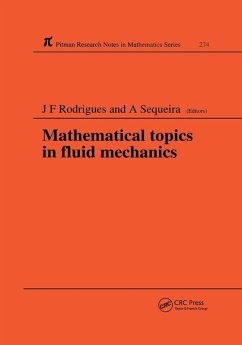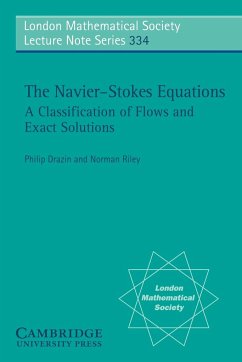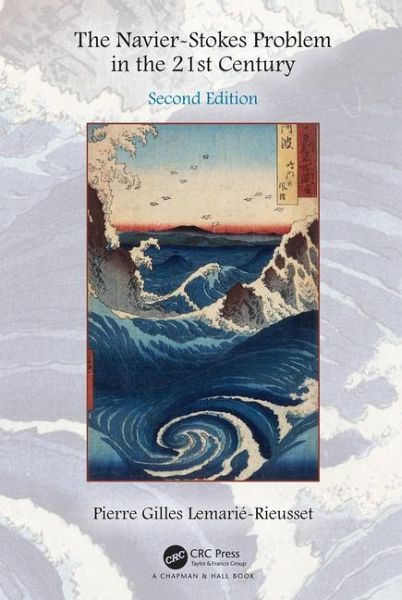
The Navier-Stokes Problem in the 21st Century
Versandkostenfrei!
Versandfertig in 6-10 Tagen
118,99 €
inkl. MwSt.
Weitere Ausgaben:

PAYBACK Punkte
59 °P sammeln!
Praise for the first edition "The author is an outstanding expert in harmonic analysis who has made important contributions. The book contains rigorous proofs of a number of the latest results in the field. I strongly recommend the book to postgraduate students and researchers working on challenging problems of harmonic analysis and mathematical theory of Navier-Stokes equations."-Gregory Seregin, St Hildas College, Oxford University""This is a great book on the mathematical aspects of the fundamental equations of hydrodynamics, the incompressible Navier-Stokes equations. It covers many import...
Praise for the first edition "The author is an outstanding expert in harmonic analysis who has made important contributions. The book contains rigorous proofs of a number of the latest results in the field. I strongly recommend the book to postgraduate students and researchers working on challenging problems of harmonic analysis and mathematical theory of Navier-Stokes equations."-Gregory Seregin, St Hildas College, Oxford University
""This is a great book on the mathematical aspects of the fundamental equations of hydrodynamics, the incompressible Navier-Stokes equations. It covers many important topics and recent results and gives the reader a very good idea about where the theory stands at present."-Vladimir Sverak, University of Minnesota
The complete resolution of the Navier-Stokes equation-one of the Clay Millennium Prize Problems-remains an important open challenge in partial differential equations (PDEs) research despite substantial studies on turbulence and three-dimensional fluids. The Navier-Stokes Problem in the 21st Century, Second Edition continues to provide a self-contained guide to the role of harmonic analysis in the PDEs of fluid mechanics, now revised to include fresh examples, theorems, results, and references that have become relevant since the first edition published in 2016.
""This is a great book on the mathematical aspects of the fundamental equations of hydrodynamics, the incompressible Navier-Stokes equations. It covers many important topics and recent results and gives the reader a very good idea about where the theory stands at present."-Vladimir Sverak, University of Minnesota
The complete resolution of the Navier-Stokes equation-one of the Clay Millennium Prize Problems-remains an important open challenge in partial differential equations (PDEs) research despite substantial studies on turbulence and three-dimensional fluids. The Navier-Stokes Problem in the 21st Century, Second Edition continues to provide a self-contained guide to the role of harmonic analysis in the PDEs of fluid mechanics, now revised to include fresh examples, theorems, results, and references that have become relevant since the first edition published in 2016.





